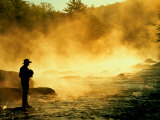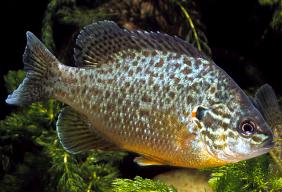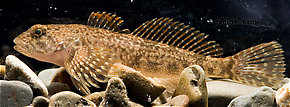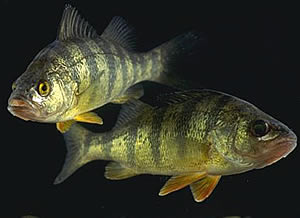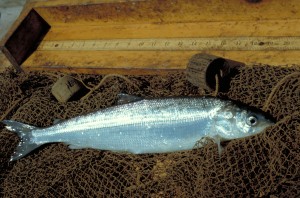Grass Carp

Grass carp populations have been recorded in 45 states including the Great Lakes region of the United States (Lake Huron and Lake Ontario). The only states that these carp haven't been introduced to are Alaska, Maine, Montana, Rhode Island, and Vermont.
-Negative effects involving grass carp included interspecific competition for food with invertebrates (e.g., crayfish) and other fishes, significant changes in the composition of macrophyte, phytoplankton, and invertebrate communities, interference with the reproduction of other fishes, decreases in refugia for other fishes, and so on.
-Grass carp seem to affect other animal species by modifying preferred habitat, an indirect effect.
-Grass carp may directly influence other animals through either predation or competition when plant food is scarce. Grass carp have significantly altered the food web and trophic structure of aquatic systems by inducing changes in plant, invertebrate, and fish communities.
-Large populations of grass carp decreases the density and composition of aquatic plant communities.
-Organisms requiring limnetic habitats and food webs based on phytoplankton tend to benefit from the presence of grass carp.
-Declines have occurred in the diversity and density of organisms that require structured littoral habitats and food chains based on plant detritus, macrophytes, and attached algae.
-Removal of vegetation can have negative effects on native fish, such as elimination of food sources, shelter, and spawning locations.
-Although grass carp are often used to control selected aquatic weeds, these fish sometimes feed on preferred rather than on target plant species.
- Increases in phytoplankton populations is a secondary effect of grass carp presence.
-A single grass carp can digest only about half of the plant material that it consumes each day. The remaining material is expelled into the water, enriching it and promoting algal blooms. These blooms can reduce water clarity and decrease oxygen levels in the water.
-Grass carp may carry several parasites and diseases known to be transmissible or potentially transmissible to native fishes.
Black Carp
The black carp has been reported in Arkansas, Illinois, Mississippi, and Missouri. There appears to be no existing, economically feasible method to completely eliminate black carp populations once they escape into large river systems.
-There is high potential that the black carp would negatively impact native aquatic communities by feeding on, and reducing, populations of native mussels and snails, many of which are considered endangered or threatened.
-Given their size and diet preferences, black carp have the potential to restructure benthic communities by direct predation and removal of algae-grazing snails.
-Based on the fact that black carp attain a large size (well over 3 feet long), both juvenile and adult mussels and snails of many species would be vulnerable to predation by this fish.
-The effectiveness of black carp in significantly reducing snail populations in aquaculture ponds indicates that any black carp occurring in the wild may cause significant declines in certain native mollusk populations in North American streams and lakes.
Bighead Carp
This species has been recorded from within, or along the borders of, at least 18 states. There is evidence of reproducing populations in the middle and lower Mississippi and Missouri rivers and the species is apparently firmly established in the states of Illinois and Missouri.
-These carp have the potential to deplete zooplankton populations. A decline in the availability of plankton can lead to reductions in populations of native species that rely on plankton for food, including all larval fishes, some adult fishes, and native mussels.
Silver Carp
Populations of silver carp have been recorded in 12 states.
-In numbers, the silver carp has the potential to cause enormous damage to native species because it feeds on plankton required by larval fish and native mussels.
-This species would also be a potential competitor with adults of some native fishes, for instance, gizzard shad, that also rely on plankton for food.
-Silver carp also have the potential to impact certain regions such as the Great Lakes region economically.







